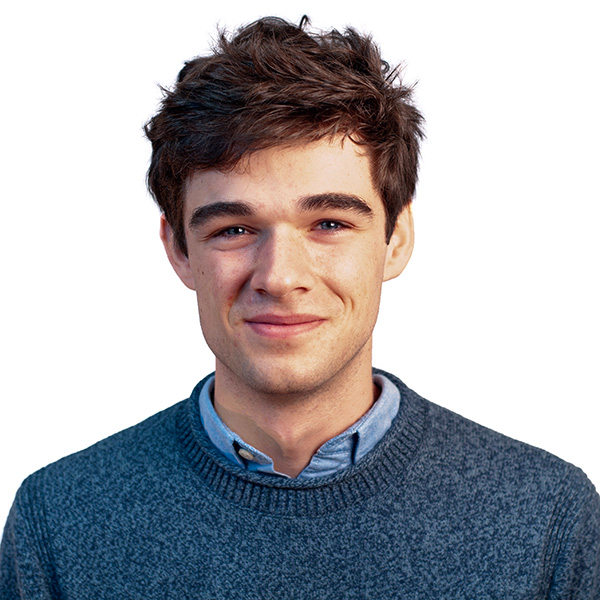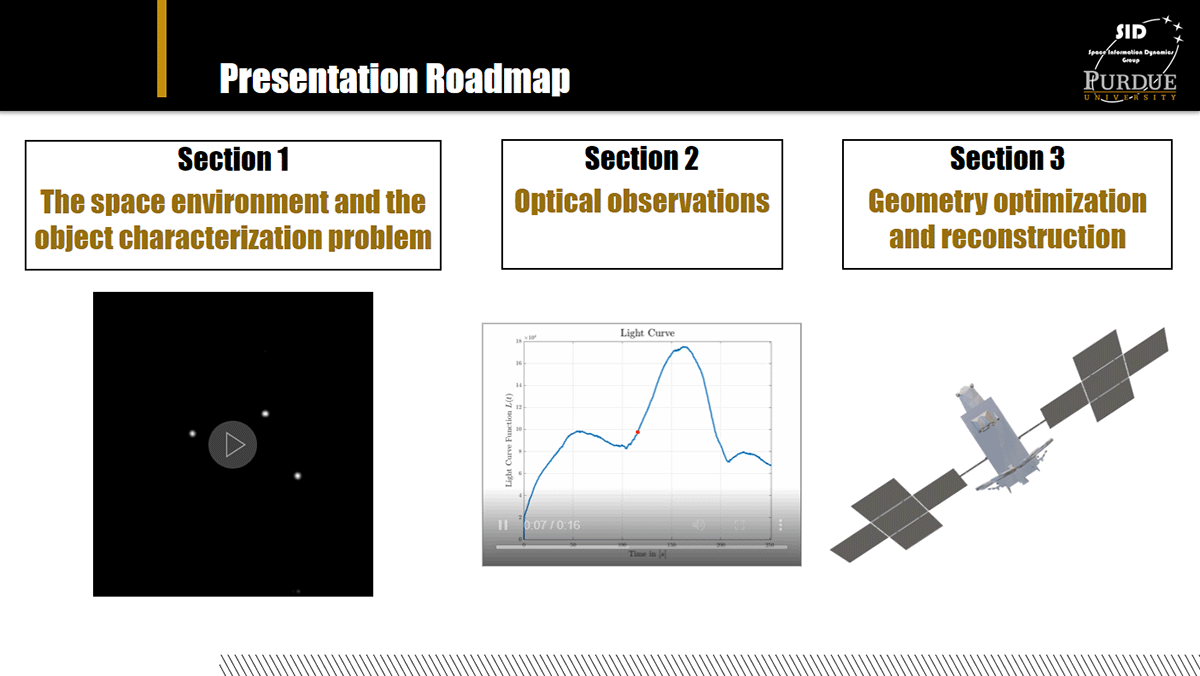Can you tell the shape of a satellite from the way it shines?
One summer, while living on an island in Maine, something in the night sky caught Liam Robinson’s eye. “I would watch satellites pass overhead at night and would sometimes notice that they were tumbling, as their brightness would change periodically,” he says.

Robinson, an undergraduate student at Purdue’s School of Aeronautics and Astronautics, wondered if there was a way to tell the shape of a passing satellite by analyzing the way it shone in the night sky.
This idle thought led him to the work of AAE Associate Professor Carolin Frueh, who specializes in detecting and characterizing objects in space. While studying at Purdue, Robinson would advance research being done on exactly these kinds of calculations, and he would eventually win awards for presenting his work.
“I was lucky enough to pick up Dr. Siwei Fan’s project as he was leaving to teach. He was very helpful in getting me on the right track in understanding his work,” Robinson says. “Initially, I was very intimidated to be tasked with improving on and extending multiple years of PhD and postdoc work.”
Frueh, who is Robinson’s research advisor, saw a good potential researcher in him.
“Liam had previously written small simulations for light curves, so out of his own interests he had already started some preliminaries,” Frueh says. “When he started the research, he was very dedicated and focused and did not hesitate to question approaches, to dive deep, and to research and leverage other approaches from other fields to make progress.”
Robinson focused his work on improving the methods used to determine the shape of space objects based on light-reflection data. His system runs an initial calculation on reflectivity data to estimate the shape of an object, then runs a finer sample based on the results from the initial run.

By leveraging computer gaming graphics tools and building on the initial computation — rather than running a fresh computation every time and averaging the results — he was able to reduce the processing time from days to mere seconds.
“Liam's work enables us to more rapidly simulate light curves that we need for a variety of approaches in satellite and space debris characterization to test our algorithms,” Frueh says. “Furthermore, he helped in developing one of our current approaches in light curve inversion for shapes a lot further. He made the current process faster and more robust and made new developments for cases in which self-shadowing is present.”
Robinson presented his results at Purdue’s Undergraduate Research Conference in 2022. His slideshow includes simulations in motion, and takes the audience step-by-step through both the problem and the solution he’s discovered. He also makes clear the limitations of his work: though his method is very effective for convex objects, non-convex shapes pose a challenge.
He ended up winning three awards this spring from his research talk: first place in the academic unit awards and in interdisciplinary awards, and the Top STEM Presentation Award. (The presentation slides are available at this presentation slides link.)

“Winning came as a total surprise!” Robinson said. “I had presented my work in a 90 minute presentation to the research group the week prior, so the Undergraduate Research Conference followed pretty naturally. It was nice to be able to distill the technical details into a condensed form that a more general audience would appreciate.”
He says he was most excited to receive the Best Interdisciplinary Research Talk award. “It highlights the fact that I had to draw on areas of math and computer graphics that had not been applied to the problem in the past,” Robinson says. “In my view, that was the true contribution of my work.”
Story by Alan Cesar
